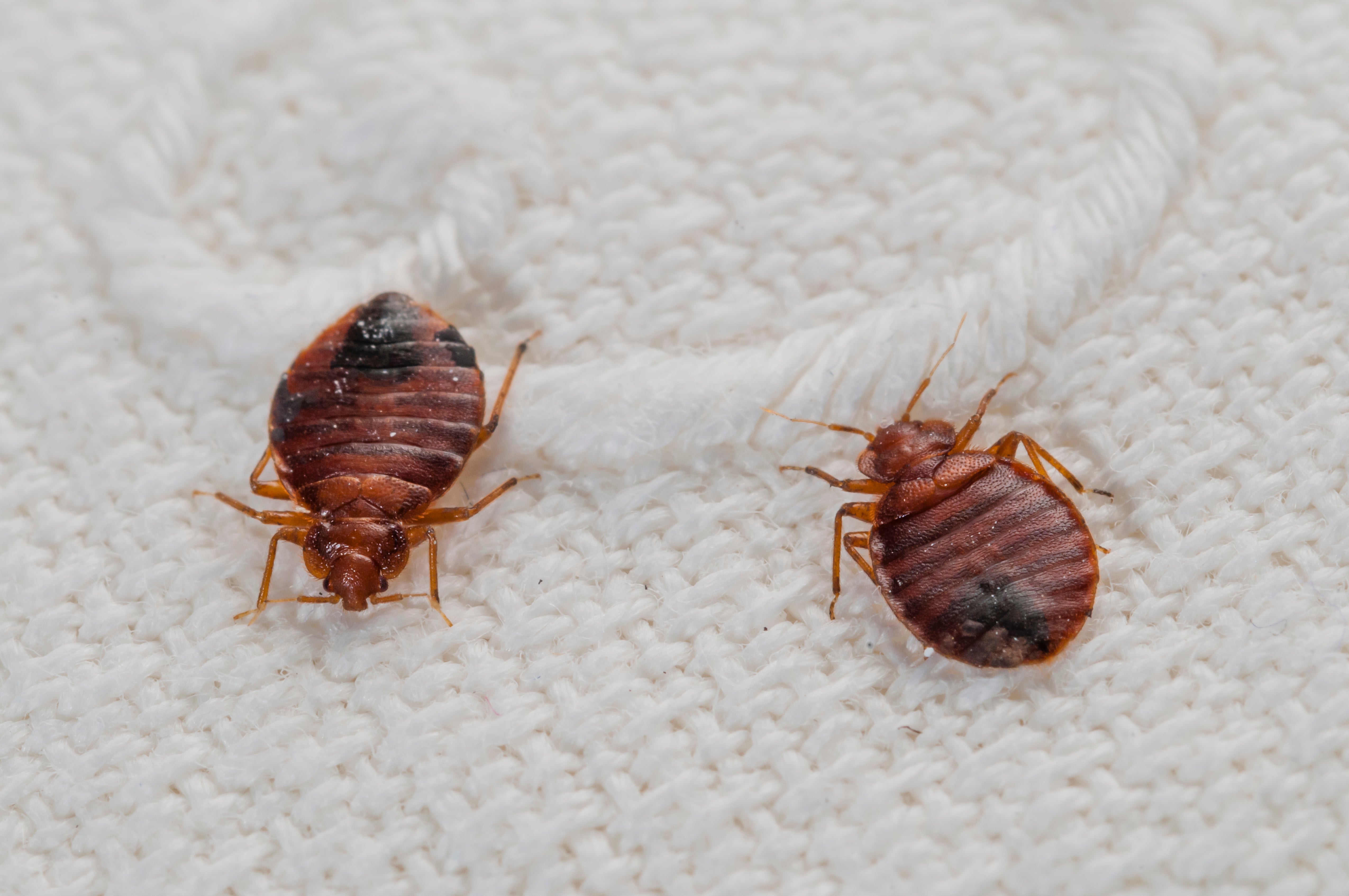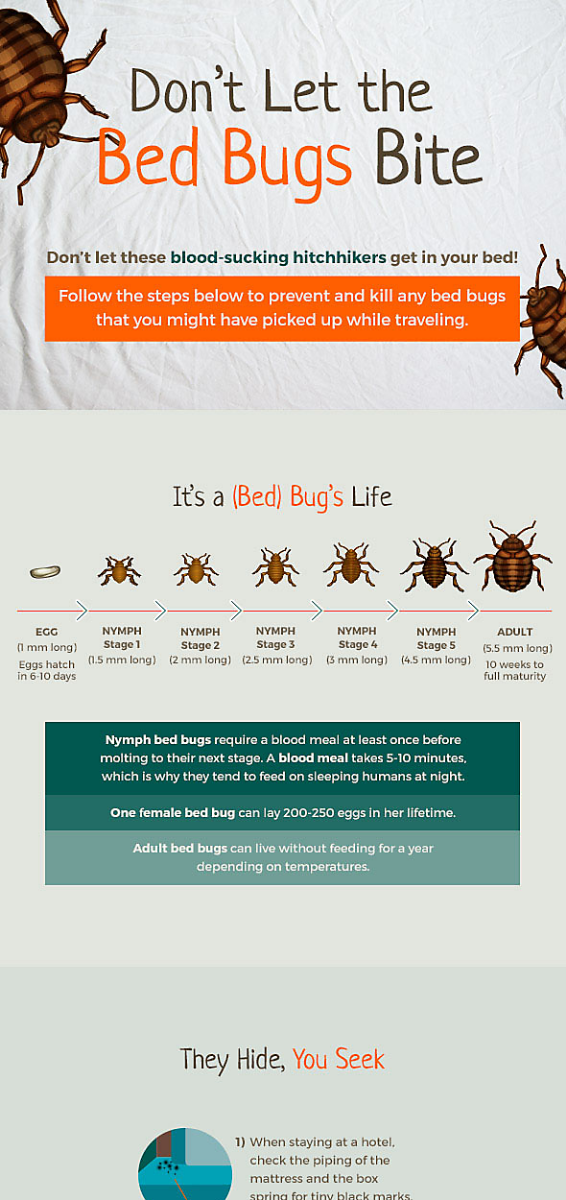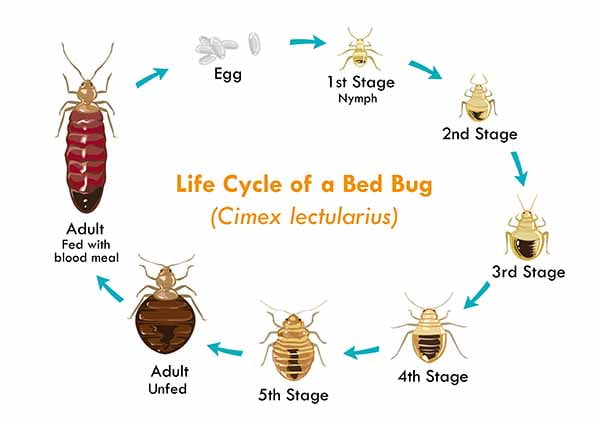Bed bugs can die without a blood meal in about 20 days. Without feeding, they perish within a few weeks.
Bed bugs rely on blood for sustenance, and without it, their lifespan is drastically shortened. Understanding the timeline of how long it takes for bed bugs to die without a blood meal is crucial for effective pest control. We will delve deeper into the life cycle and habits of bed bugs, as well as explore various methods to eliminate them from your home.
By grasping this information, you can better equip yourself to tackle a bed bug infestation and protect your living space from these pesky insects.

Credit: www.scientificamerican.com
Life Cycle Of Bed Bugs
Bed bugs are notoriously resilient pests that can cause distress and frustration for homeowners. Understanding the life cycle of bed bugs is crucial in effectively managing an infestation. The life cycle of bed bugs consists of three main stages: the egg stage, nymph stage, and adult stage. Each stage plays a significant role in the reproduction and survival of these persistent insects.
Egg Stage
The egg stage is the starting point of a bed bug’s life cycle. Female bed bugs can lay up to 200 eggs in their lifetime, typically depositing them in cracks and crevices near their hiding spots. Bed bug eggs are tiny, measuring about 1 mm in length, and are white in color. These eggs usually hatch within 6 to 10 days under favorable conditions, such as adequate warmth and access to blood meals.
Nymph Stage
Once the eggs hatch, they give way to immature bed bugs known as nymphs. Nymphs resemble adult bed bugs but are smaller and translucent in color before feeding on blood. During this stage, bed bugs go through several molts, shedding their exoskeleton to grow larger with each instar. The nymph stage lasts approximately 5 weeks, and during this time, bed bugs require regular blood meals to progress to the next stage of development.
Adult Stage
After completing their final molt, nymphs reach the adult stage. Adult bed bugs are reddish-brown, oval-shaped, and about the size of an apple seed. They become sexually mature and capable of reproducing after feeding on blood. Under optimal conditions, bed bugs can live up to 6-12 months as adults, and females can lay hundreds of eggs during their lifespan, perpetuating the infestation cycle.
Factors Affecting Bed Bug Survival
Factors affecting bed bug survival include temperature, humidity, and access to a blood meal. Without a feeding source, bed bugs can survive for several months, but their lifespan is significantly shorter in cooler temperatures and low humidity environments.
Factors Affecting Bed Bug SurvivalOne of the biggest concerns when dealing with a bed bug infestation is eliminating these pesky pests entirely. Many homeowners wonder, “How long does it take for bed bugs to die without?” The answer to this question is influenced by several factors that play a crucial role in the survival of bed bugs.TemperatureHTML syntax:Temperature
Temperature has a significant impact on bed bug survival. Bed bugs thrive in environments with a temperature range between 70°F to 80°F (21°C to 27°C). However, extreme temperatures can be detrimental to their survival. When exposed to temperatures below 0°F (-18°C) or above 113°F (45°C), bed bugs cannot survive for extended periods.Availability of Food SourceHTML syntax:Availability Of Food Source
Bed bugs require a consistent supply of blood to survive and reproduce. They primarily feed on human blood, but they can also survive on the blood of other warm-blooded animals. Without access to a food source, bed bugs can survive for several weeks to several months. However, it’s important to note that bed bugs have the ability to become dormant and remain alive for up to a year without feeding if necessary.To summarize, temperature and the availability of a food source are two crucial factors that affect the survival of bed bugs. Extreme temperatures can be fatal to these pests, while their ability to go into a dormant state helps them survive without feeding for a significant amount of time. Now that we understand these factors, we can explore effective methods of eliminating bed bugs and preventing future infestations.Methods To Kill Bed Bugs
When it comes to dealing with a bed bug infestation, time is of the essence. The longer these pests linger in your home, the more difficult they become to eliminate. Knowing how long it takes for bed bugs to die without intervention and the methods available to kill them can help you take swift action and regain control of your living space.
Heat Treatment
Heat treatment is one of the most effective ways to kill bed bugs. These resilient insects cannot withstand temperatures above 113°F (45°C), so raising the temperature of an infested area to this level ensures their demise. Thermal treatment involves using specialized equipment to heat the infested space, including mattresses, furniture, and cracks and crevices where the bugs may hide. By gradually increasing the heat and maintaining it for several hours, the bed bugs and their eggs are effectively eliminated.
Insecticides
Insecticides are a common tool used to kill bed bugs. These chemical substances are formulated to exterminate the pests on contact or disrupt their reproductive cycle. When selecting an insecticide, it is crucial to choose one specifically labeled for bed bug control. It is recommendable to follow the instructions provided by the manufacturer, keeping in mind that some insecticides may require multiple applications to eradicate the infestation entirely. As a precaution, ensure proper ventilation and take necessary safety measures when applying insecticides.
Diatomaceous Earth
Diatomaceous earth is a natural, low-toxicity substance that can be used to kill bed bugs. Composed of fossilized remains of diatoms, this powdery substance acts as a desiccant, absorbing the bed bug’s protective waxy layer, leading to dehydration and eventual death. When using diatomaceous earth, it’s essential to apply it in areas where bed bugs are likely to traverse, such as cracks, crevices, and baseboards. Keep in mind that diatomaceous earth takes time to work, so it may take several days or weeks to notice a significant reduction in the bed bug population. Regular reapplication may be necessary to maintain its effectiveness.
In conclusion, when faced with a bed bug infestation, it is crucial to choose an effective method for extermination. Heat treatment, insecticides, and diatomaceous earth are all viable options, each with its own advantages. While heat treatment provides quick results by targeting both bugs and eggs, insecticides offer a convenient option, and diatomaceous earth offers a natural alternative. Consider the severity of the infestation, your specific circumstances, and the advice of a professional pest control expert to determine the best method for dealing with your bed bug problem.
Timeline For Bed Bug Extermination
When dealing with a bed bug infestation, one of the key questions on your mind might be: how long does it take for bed bugs to die without intervention? Understanding the timeline for bed bug extermination can help you plan and take appropriate action to eradicate these pesky pests from your home. In this article, we’ll explore the timeline for bed bug extermination, including both professional extermination and DIY methods.
Professional Extermination
Professional extermination offers an effective and swift solution to eliminate bed bugs from your home. Typically, a licensed bed bug exterminator will conduct a thorough assessment of the infestation to determine the extent of the problem and formulate a targeted treatment plan.
- Initial inspection to assess the severity of the infestation.
- Implementation of specialized treatment, such as heat treatment, fumigation, or insecticide application.
- Follow-up inspections and treatments may be required to ensure complete eradication.
Diy Methods
For those preferring a more hands-on approach, there are several DIY methods available for bed bug extermination.
- Thorough cleaning and decluttering of the infested areas.
- Application of bed bug sprays or powders.
- Use of heat treatments, steam cleaning, or vacuuming.
- Encasement of mattresses and furniture to trap and starve the bed bugs.
Preventive Measures For Future Infestations
Regular Cleaning Habits
Maintaining cleanliness in your living spaces is crucial to preventing bed bug infestations:
- Regularly wash bedding in hot water.
- Declutter to eliminate hiding spots.
- Inspect used furniture before bringing it inside.
Vacuuming
Frequent vacuuming can help remove existing bed bugs and their eggs:
- Focus on carpets, mattresses, and furniture.
- Dispose of vacuum bags in sealed containers.
Sealing Cracks
Prevent bed bugs from entering by sealing cracks and crevices in your home:
- Use caulk to seal gaps around baseboards.
- Repair torn window screens promptly.
- Install door sweeps to block entry points.

Credit: www.saferbrand.com
Dealing With Bed Bug Bites
Bed bug bites can be quite bothersome, but how long does it take for these pests to die without a host? Discover the duration of their survival when deprived of blood meals.
Creating an enticing blog post about dealing with bed bug bites is essential for informing readers about identification and treatment options. Identifying Bites and Treatment Options are crucial aspects of managing bed bug bites effectively.Identifying BitesTo recognize bed bug bites, look for red, itchy welts in a clustered pattern on the skin. Identify bites is essential in preventing further infestation.Treatment OptionsFor treating bed bug bites, options include applying calamine lotion or taking antihistamines to reduce itching. Treatment Options can offer relief from discomfort caused by bed bug bites.
Credit: www.terminix.com
Frequently Asked Questions For How Long Does It Take For Bed Bugs To Die Without?
How Long Does It Take For Bed Bugs To Die Without Food?
Bed bugs can survive without feeding for several months, depending on the temperature and humidity levels. In optimal conditions, they may survive up to a year without a blood meal. However, their ability to survive long periods without food varies based on environmental factors.
What Factors Affect The Survival Time Of Bed Bugs Without Feeding?
The survival time of bed bugs without food is influenced by temperature, humidity, and access to potential hosts. Higher temperatures and lower humidity levels can reduce their survival time, while the presence of available blood hosts can prolong their survival without feeding.
Understanding these factors is crucial in addressing infestations.
Can Bed Bugs Die Naturally Without Any Intervention?
In optimal conditions, bed bugs are known for their resilience and can survive long periods without feeding. While some may naturally die without intervention, their ability to endure without sustenance makes relying solely on natural mortality ineffective in controlling infestations.
Professional extermination methods are often necessary to effectively eliminate bed bugs.
Conclusion
It is important to understand the factors that influence the length of time it takes for bed bugs to die without a host. Environmental conditions, temperature, and access to food sources all play a role in their survival. By implementing effective prevention methods, regular inspections, and professional treatment if necessary, it is possible to eliminate bed bug infestations effectively.
Taking prompt action is key to stopping their reproduction and preventing further discomfort.
Related posts:

I’m MD Tanvir, and I bring years of expertise gained from working closely with pest control companies to the forefront. My journey in the industry has inspired me to launch Bug Battler, a platform aimed at equipping people with the know-how to combat pests autonomously. Through Bug Battler, I aim to empower individuals with practical insights to tackle pest infestations effectively.

